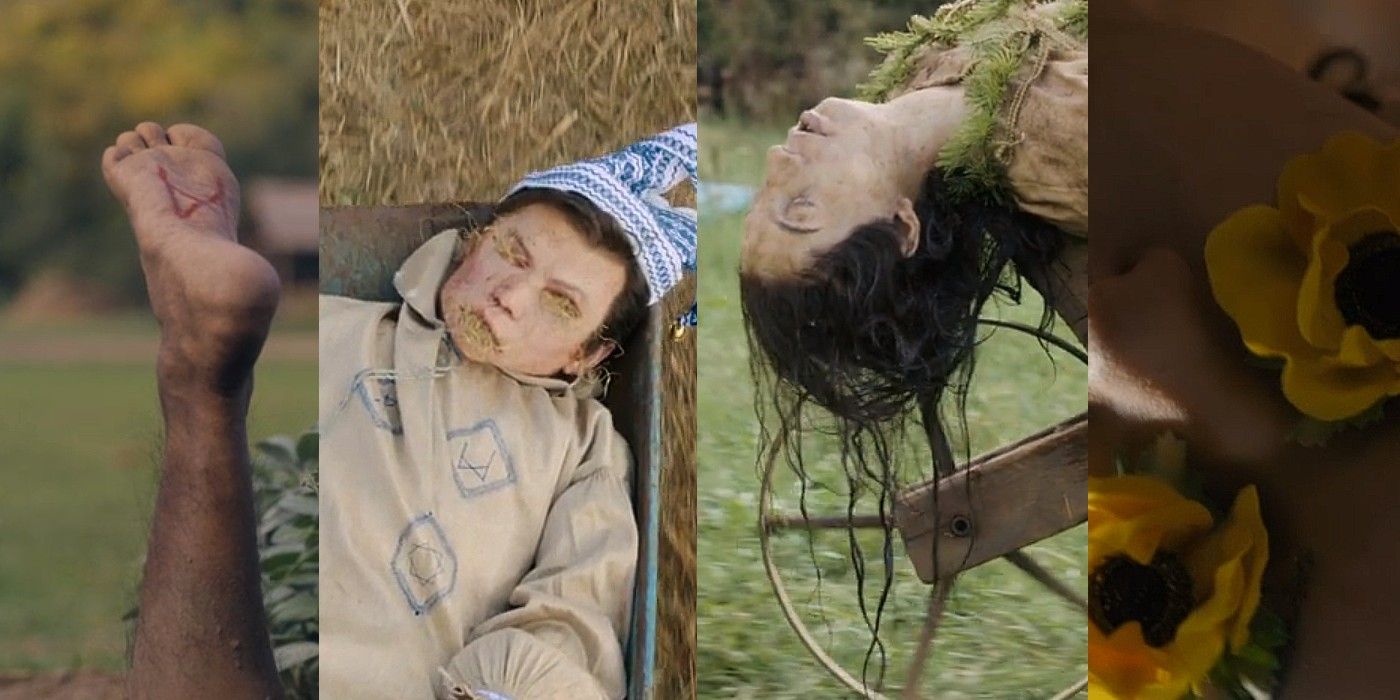
Ari Aster's folk horror movie Midsommar is filled with an abundance of obscure symbolism, to the point that major character deaths carry special elemental significance. One theory about the deaths in Midsommar, in particular, suggests that each side character's death represents the four elements: earth, fire, water, and air. While Dani Ardor (Florence Pugh) and her relationship with Christian (Jack Reynor) are the primary focus of the movie, their friends and the people they meet at the mid-summer festival in Sweden are just as important to their framework. Their deaths are meant to symbolize an even deeper connection to the Earth for the Hårga cult, whose reliogio-cultural practices are somewhat steeped in the tenets of paganism.
In recent years, folk horror has grown increasingly popular as a genre, evolving into a mode of relaying culturally rich stories of various kinds and degrees, as evidenced in films such as The Witch and The Ritual. From Joko Anwar's recent release of the Indonesian folk horror movie Impetigore to the remake of Lake Of Death, the folk horror sub-genre has been met with praise in the 21st century, for its ability to encapsulate such unique tales. Aster's movie is influenced entirely by the history of mid-summer festivals in Sweden, which were held to harken a period of seasonal harvest and fertility. Midsommar follows Dani, Christian, Josh (William Jackson Harper), and Mark (Will Poulter) who travel with their colleague Pelle (Vilhelm Blomgren) to join in the cultural festivities with his ancestral commune. While the sun shines bright as the days amble, a darkness looms over the characters, as each of them begin to leave or disappear under bizarre circumstances.
In order to understand why the elemental theory works, it is critical to acknowledge the fact that the Hårga cultists share a strong relationship with the Earth and nature as a whole. Their entire mid-summer tradition serves the purpose of ensuring that they will have a plentiful harvest, healthy livestock, an abundance of food resources, and a growing community with new births. Their insistence on ensuring that they are giving back what they take from the Earth is enough to validate the theory that Josh, Mark, Connie, and Simon's deaths are symbolic of the four elements — here's why the theory is entirely plausible.
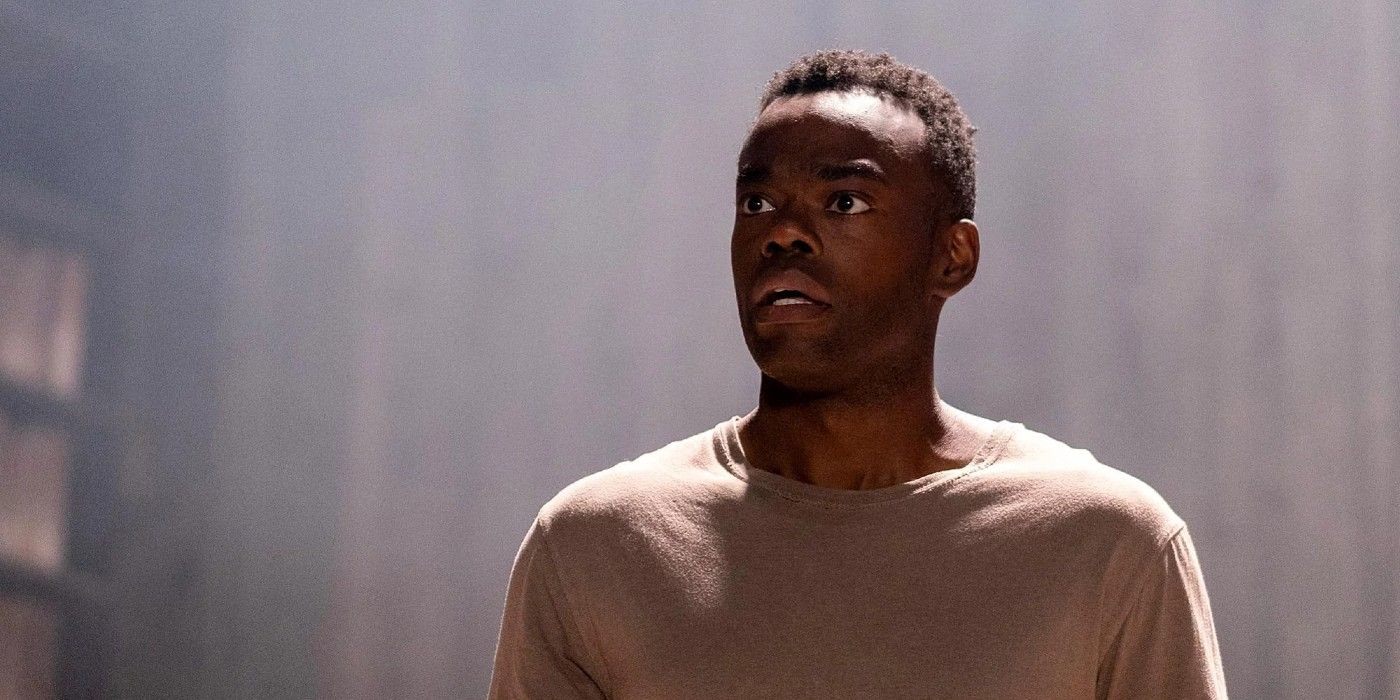
After the Harga cult's sacred text, Rubi Radr goes missing, the disappearance is blamed entirely on Josh. Prior to the accusation, he is in the current oracle's home taking photos of the text in order to include it in his Ph.D. thesis. While taking pictures, he is hit over the head by a member of the Harga cult while a man wearing Mark's face stares at him. While this particular scene in itself does not point towards any elemental symbolism per se, Josh's demise is a result of his unhealthy curiosity that verged on ignoring the commune's rules, for which, he is brutally punished. It is also interesting to note that Josh's fate is left unknown until the final fifteen minutes of the movie when Christian runs from the building he just had sex with Maja in.
As Christian runs towards a small barn, he sees Josh's foot sticking out of a garden plot with a Swedish rune engraved into the bottom of his foot. This specific rune is known as the Ansuz rune, which represents the transmission of intelligence and knowledge. While Josh was killed for his drive toward achieving his goal to attain as much information on the Harga cult's traditions as possible, his death represents earth rather than the selfishness of intellectual gain. His body is buried under fresh dirt, and his foot sticks out of it like a plant. This is symbolic of what the Hargas hope to achieve with their mid-summer festivities: give back to the Earth and be rewarded with plentiful crops as a result. In this instance, Josh's leg represents the sacrifice of his body for a plentiful harvest, along with the fact that no outsider is deemed worthy of forbidden knowledge within the confines of the cult.
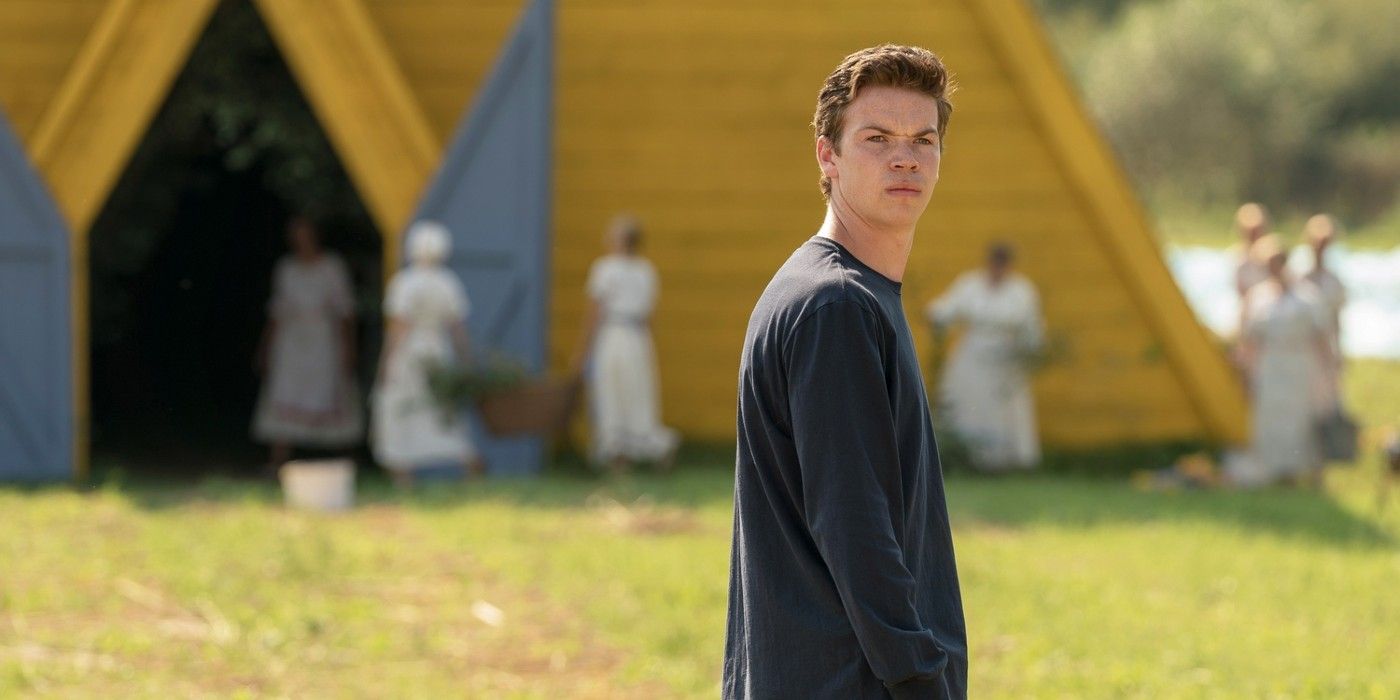
The Hårgas kill Mark after he accidentally urinates on their sacred ancestral tree, an act that is interpreted as a massive transgression and insult from the cult's perspective. As Mark's death is not immediately established as he is missing halfway through the film after being beckoned by a Hårga girl, it is revealed much later during Josh's final scene with the Rubi Radr. Mark's death was somewhat foreshadowed in the initial scenes of Midsommar, as the children playing "skin the fool" is a direct reference to Mark's skin being peeled off later on, owing to the incredibly foolish act of urinating on a sacred artifact. When the final sacrificial scene towards the end is underway, his body is stuffed with hay and placed in a wheelbarrow.
Keeping these chain of events in mind, the distinct way in which his body is staged indicates that Mark represents the element of fire, because hay burns much quicker than flesh. Hence, it is entirely plausible that the Hårgas chose to gut him and then fill his body with hay, but it does not make much sense for his death to represent fire. However, it would make more logical sense if Christian's grizzly demise was representative of this element, as the final shot in the triangular building shows him engulfed in flames. On the other hand, if it's factual that each of the side characters' deaths represents an element, Mark's would have to be fire.
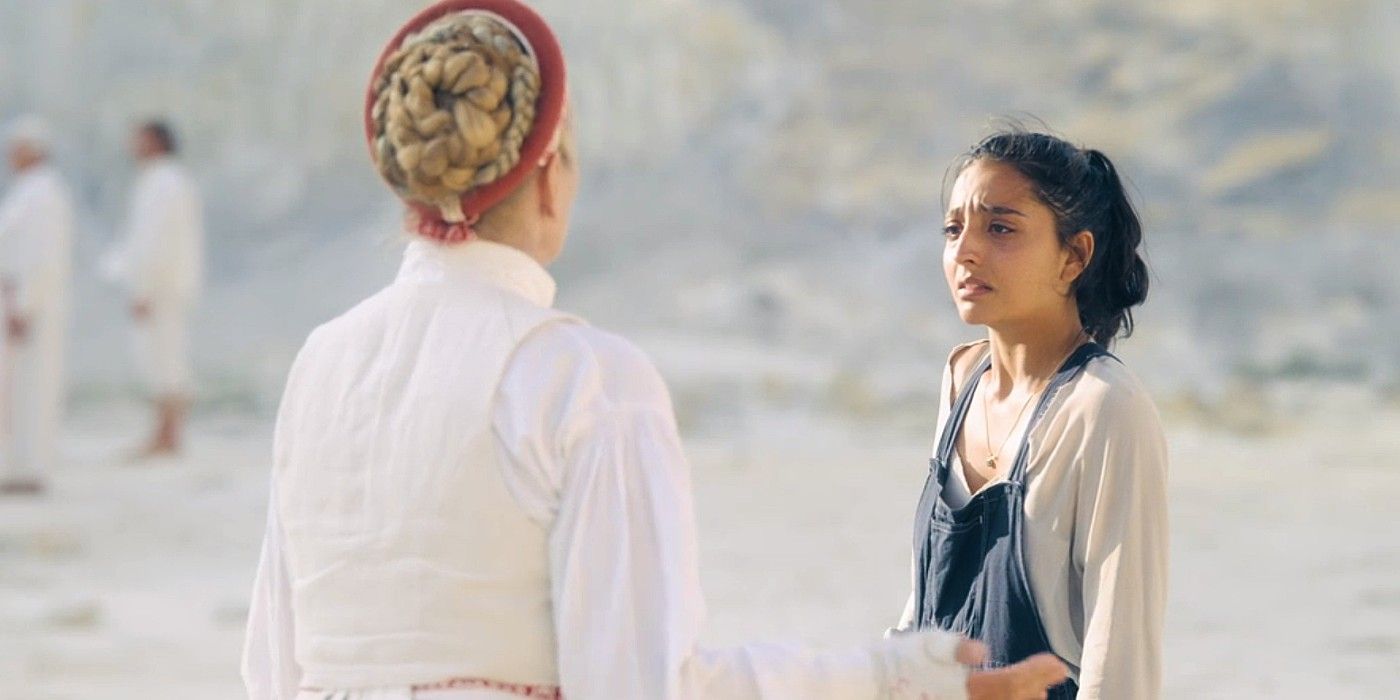
The truth of what happened to Connie after she attempted to flee the mid-summer festival with Simon has been a major point of discussion. While audiences see the physical bodies of every other character before the final scene, she does not reappear until the very end — in a wheelbarrow. As she's wheeled into the building, her body is blue, wet, and covered in seaweed. It is obvious that she was drowned by the Hårga members and left in the water until they needed to use her for the appropriate ritual. Therefore, Connie's death is an obvious representation of water and a possible reference to the fact that her refusal to accept the ways of the commune was literally purged out of her body through death by drowning.
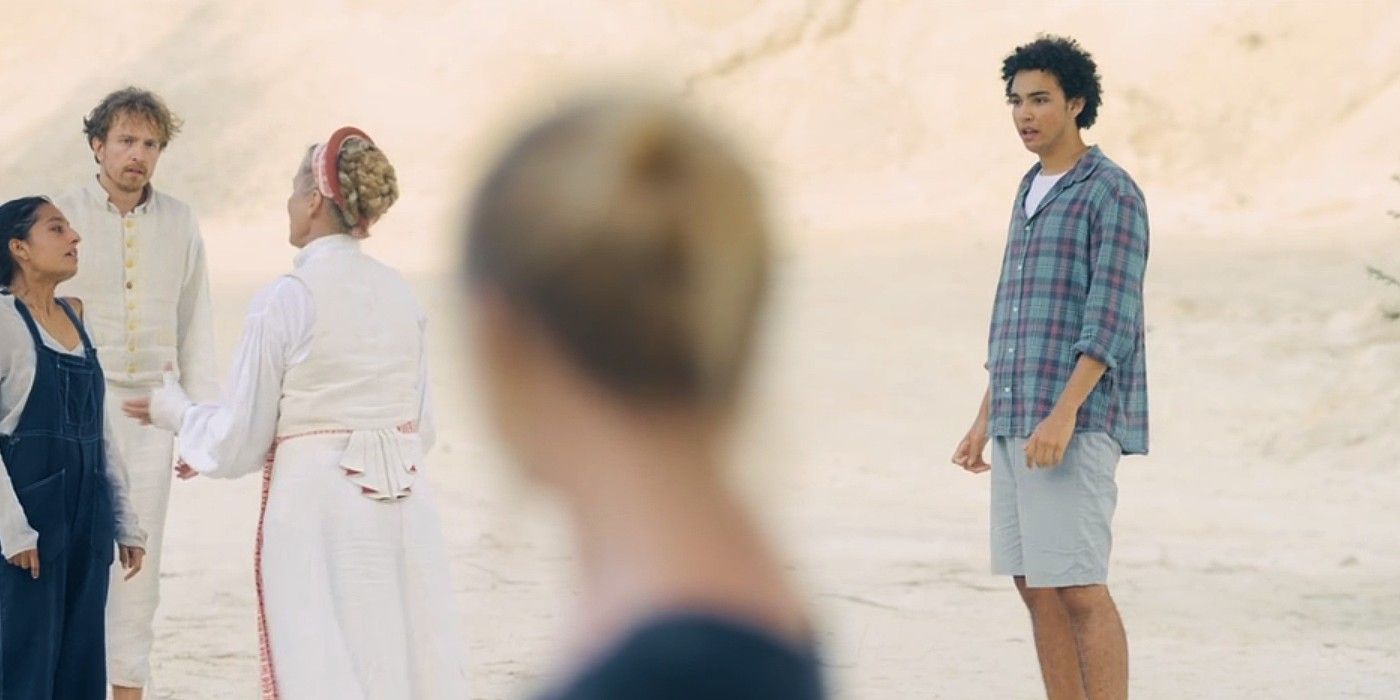
Out of every side character's death, Simon's is the most unsettling. After Christian sees Josh's foot in the garden, he seeks refuge in a small barn where he discovers Simon's body hanging from the ceiling. The skin on his back is peeled from his muscles and positioned to have the appearance of bird wings, which is right in line with the blood eagle method of execution and torture. This kind of torture method has been referenced in great detail in Norse poetry, and it is so interesting to note that his eyes are also removed and replaced with flowers. Perhaps the most disturbing part of Simon's death is the fact that he is actually alive when Christian finds him. It's very subtle, but his chest can be seen rising and falling with each painful breath he takes. With the combination of his body hanging from the ceiling, the wings made from the skin on his back, as well as his continued breathing, Simon represents air.
While each of these characters' deaths appear to be related to an element, it does not seem to have a connection to who they are as individuals, which would make the theory more concrete. For instance, if Simon had asthma or Connie expressed a deep fear of drowning, then their elemental deaths would make more sense. Nonetheless, this theory provides their presence at the mid-summer festival with more purpose than just being invited. It may be that the Harga cultists needed them in order to provide a sacrifice to the four elements in the form of killings that resemble earth, fire, air, and water, which is a standard ritual element when invoking the elements. Ultimately, it is entirely plausible that Josh, Mark, Connie, and Simon's deaths in Midsommar were indicative of a specific element that the Harga cult members chose in order to please the earth or satisfy some larger tradition or ritual.
from ScreenRant - Feed https://ift.tt/36Fqvof
via IFTTT
No comments:
Post a Comment